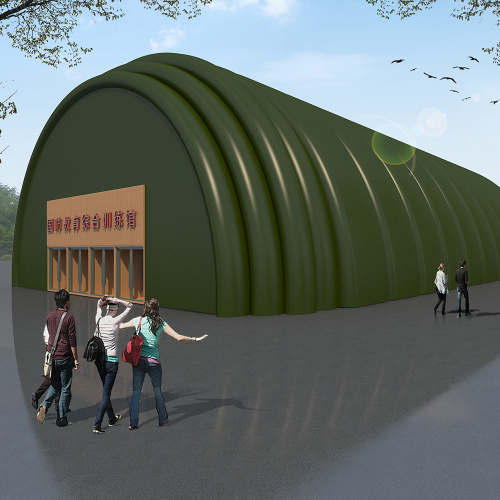Air - supported membrane structure, also known as inflatable membrane structure, is a new type of architectural form that has gained popularity in recent years.
It is constructed based on the principle of using air pressure. Special membrane materials, usually made of high - strength synthetic fibers coated with polymers like PVC (polyvinyl chloride) or PTFE (polytetrafluoroethylene), form the outer shell of the structure. By continuously pumping air into the interior, the air pressure inside is maintained higher than the outside. This pressure difference enables the membrane to be inflated and maintain a stable three - dimensional shape, creating a large - scale, enclosed space.
Design and Construction
Structural Design
Air - Supported Technology: This tent utilizes advanced air - supported technology. The structure is maintained by a constant air pressure system, eliminating the need for traditional internal support columns. This design maximizes the internal usable space, allowing for flexible layout arrangements of command desks, communication equipment, and meeting areas. The air - retention system is highly efficient, with durable, airtight membranes that can maintain the tentx27s shape for extended periods with minimal energy consumption for air replenishment.
Heavy - Duty Materials: Constructed from high - strength, military - grade PVC fabric, the tent is resistant to tears, punctures, and abrasions. The material is also treated to be fire - retardant, UV - resistant, and waterproof. This ensures that the tent can withstand harsh environmental conditions, including strong winds, heavy rain, and intense sunlight, making it suitable for deployment in various terrains and climates.
Exterior and Interior Features
Exterior Camouflage and Identification: The tent can be customized with appropriate camouflage patterns for military operations or high - visibility markings for emergency response. As seen in the reference design, it has a solid color appearance that can be adapted to different operational requirements. The exterior can also be equipped with lighting systems for night - time operations and identification markers for easy location by personnel.
Interior Configuration: Inside, the large open space can be divided into functional zones using modular partitions. These partitions can create separate areas for command staff, communication centers, intelligence analysis sections, and rest areas. The tent is designed to accommodate a wide range of equipment, with built - in fixtures for mounting communication antennas, lighting, and power supply systems.







